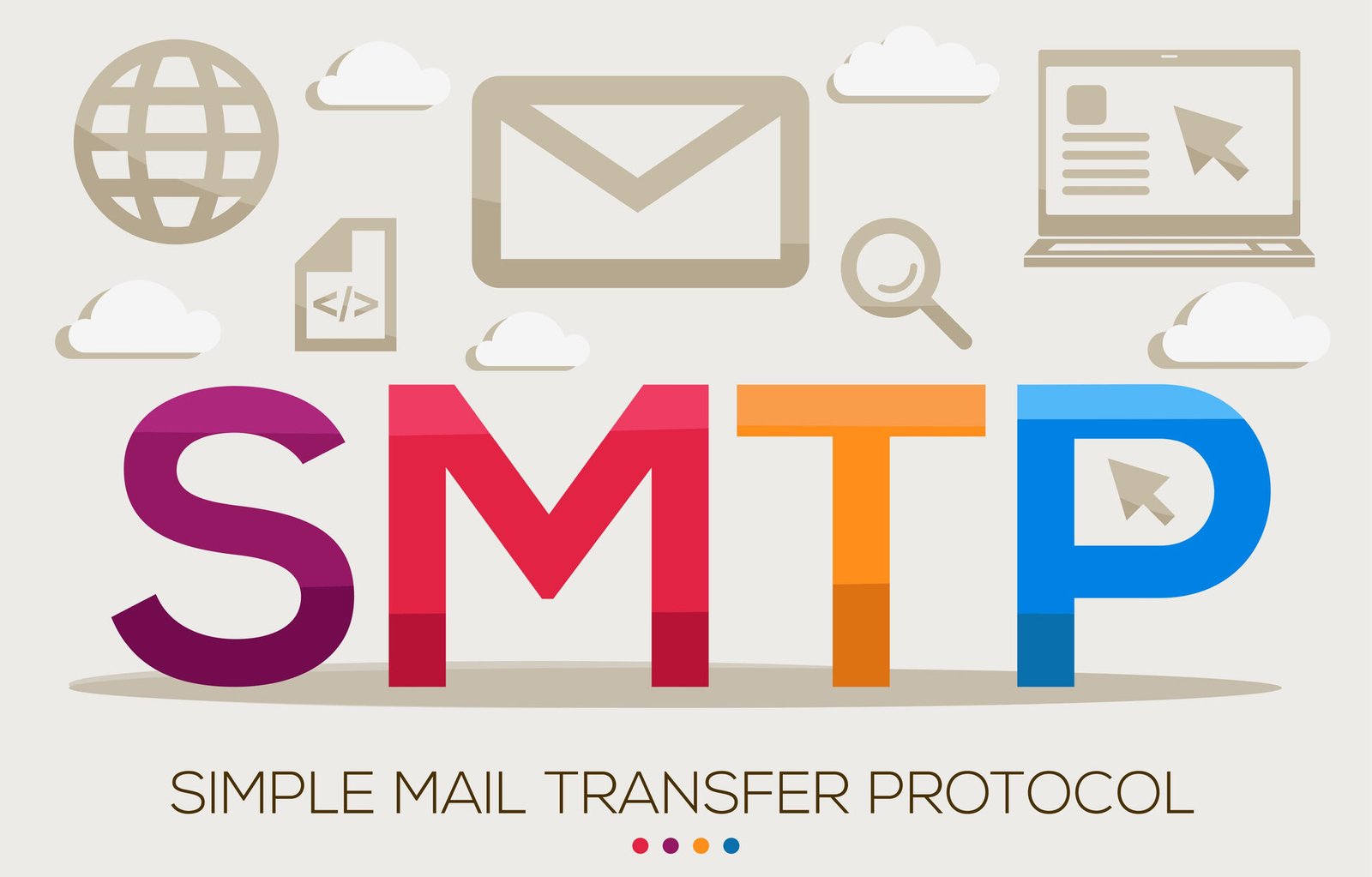- April 24, 2024
- Blog
SMTP, or the Simple Mail Transfer Protocol, in the real world, means emails can be transferred from one account to another through the Internet. It works according to a code that is a set of rules for email transferring, which explains how you can exchange emails via different email platforms like Gmail or Outlook.
An SMTP server resembles a post office service in the physical world, which deals with sorting the letters and delivering them to the respective addresses, but in the digital realm. The computer system in the middle handles the job of sending outgoing emails, choosing the right path, and then driving them to their destination.
Statistics clearly show a rapid growth in the usage of SMTP.com services, especially among the top 1 million websites that are more or less equally distributed from 2021, indicating an increasing demand for this protocol within the email protocol.
Components of SMTP

SMTP’s structure includes several critical components, each with a unique role in email management: SMTP’s structure includes several critical components, each with a unique role in email management:
Email Composition Application
This is where emails are composed and prepared for dispatch, which is the action of sending them out. Consider it the beginning of the road of an email trip.
Mail Submission Program
This section takes the email that was just composed in the previous section and forwards it to the system in charge of sending the mail.
Email Routing Software
This software’s role is almost similar to that of a post office’s sorting center, in the sense that it first needs to determine to which address the email should be sent.
Local Mail Dispatcher
The conclusion of this whole process is the local system which receives the email from the routing software and finally delivers it to the recipient inbox.
All of these elements are vital in guaranteeing that the email message reaches the sender to the recipient.
Working of SMTP

The SMTP operation includes a step-by-step procedure for sending an email, a specific set of rules it sticks with, and identifying the errors that clients can encounter during the process. Let’s unpack this:
Establishing Connection
To let email clients connect with SMTP, a server for SMTP has to be configured. When a client sends an email, there is an SMTP handshake made via a TCP connection with a server at the beginning of the process.
Sending Instructions
The SMTP server gives the email client a set of commands, in which it follows the instructions using SMTP. This command contains the sender’s and recipient’s email addresses as well as the message with which the body of the email will be sent.
Checking Domains
The service checks that the sender and recipient have the same domain like “@example.com”.
Same Domain
If the list of email addresses matches, the email goes right through without any problems.
Different Domains
If the servers are different, the machine in question verifies its DNS to find out where it should send the email.
Important Commands

In SMTP communication, specific commands are used to manage the email sending process: In SMTP communication, specific commands are used to manage the email-sending process:
The “HELO” command is similar to a greeting; it is a way how the sender’s computer presents itself to the server of the recipient via the mail server.
“MAIL” denotes the initial step for email sending that carries the sender’s e-mail address.
“RCPT” (receiver) is used right after “MAIL” (message) to tell the server which recipient will receive the email. If the recipient is more than one, the command is given many times.
“DATA” is the command that sends the email, line by
They are known as commands that assist in the sequence of sending emails from one server to another.
Types of SMTP

In the SMTP ecosystem as defined by RFC 5321, there are four main types of systems, each with a distinct function in handling email:
Initial SMTP System
This is the departure point in the system of emails where emails are initially entered into the online world.
Recipient SMTP System
This last checkpoint will ensure that emails are gathered before they are sent to their destination in the recipient’s inbox.
SMTP Relay System
This system resembles a series of bridges that allow email messages to cross between the SMTP servers without any modification.
SMTP Gateway
This is a unique type of system that transfers emails between servers, at the same time it can translate or correct the message if required, thus it functions as an interpreter or editor.
Each of these systems is a major factor in the journey of an email from sender to receiver.
SMTP Port

SMTP port has a similar role to the specific docks that ships use at a port which are designated spots for offloading the mail cargo. It is a digital channel that email data utilizes in the process of moving from one server to another. There are a few common ones used:
Port 25
This is a traditional port but it is not secure against spamming and internet providers are not using it anymore. Its main application is for connecting servers but it does not work for sending emails from your personal computer.
Port 465
First, it was used for secure email sending with encryption which was supposed to be better than port 25. Nevertheless, it was never officially accepted, and it is now treated as an outdated grammar.
Port 587
Today, this port is known as the connector of secure emails, which uses encryption protocols like STARTTLS. Most email providers usually prefer using this port.
Port 2525
In case port 587 is blocked, this is the alternative. Not necessarily SMTP-oriented, but it is still widely used by service providers as an alternative.
Every port is designed for a specific function and is provided with a different level of security, which may make one more appropriate than the other for some email tasks.
How are emails sent using SMTP?

Sending emails through SMTP is a detailed process with several critical steps:
Crafting the Email
Users type an email and press send with an email client. This includes creating an email subject line in the header and writing the text in the body. The header has the sender’s and the recipient’s email addresses like an envelope has an address; these details are necessary for the email to reach the right person.
Starting the Email Transfer
It is SMTP that is responsible for sending the already composed mail to the server. Generally, the MTA connection takes place on TCP port 587 for security reasons.
Determining the Email Path
If the sender and receiver have different email domains, the server looks at the Domain Name System (DNS) for the recipient’s domain’s Mail Exchange (MX) record to locate the server of the receiver.
Handing Off the Email
Once at the SMTP server of the sender, the SMTP server connects to the recipient’s SMTP server and emails are exchanged. This step is known as a SMTP relay.
Receiving and Storing
The email is sent to the recipient’s mailbox where it stays in the server until it is retrieved by the recipient.
Accessing the Email
The recipient who uses email clients to read their messages will go through the process of sending or sharing the email. One way that a client interacts with the server of a recipient is through the downloading of new emails.
Each stage ensures secure and accurate delivery of emails from one user to another across the internet.
SMTP for Gmail
Adjust Gmail Settings:
-
- In Gmail, navigate to your settings and find the section for ‘Forwarding and POP/IMAP’.
- Enable IMAP to allow your emails to be accessed by other clients.
Configure Your Email Client:
-
- Provide the exact server details for the inbound and outbound mail, where you need to enable the SSL encryption for security as well as authentication i.e. something that verifies your identity.
- For sending emails, you will input the SMTP server details of Gmail and then choose the correct port, depending on whether you’re using SSL or TLS/STARTTLS.
These steps will enable you to use applications like Outlook or Apple Mail to access your emails in Gmail. Always make sure that you use the right ports and that SSL/TLS is enabled for secure email communication.
Conclusion
The SMTP services are of utmost significance for the email communication process and especially for email marketing. Picking the best SMTP provider and making sure that it is set up correctly is a major task that comes before you try to send your email campaigns out. SMTP services are numerous with diverse setups and features that one can select to meet their email marketing needs.
Finding a provider that will meet your campaign needs for success is also critical. It is important to do your research and choose the right provider.


